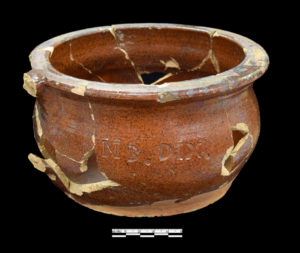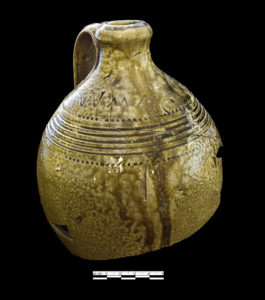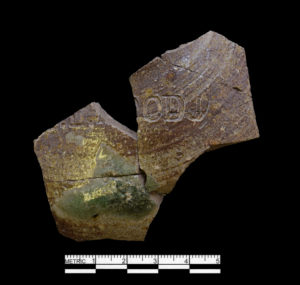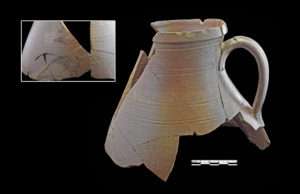Turning and Burning: Locally Made Pottery from the Trogdon-Squirrel Creek Assemblage
By D. Brad Hatch
July continues our series of posts highlighting the artifacts recovered from the Trogdon-Squirrel Creek site (31Rd1426/1426**) in Randolph County, North Carolina. Dovetail Cultural Resource Group conducted data recovery excavations at this site on behalf of the North Carolina Department of Transportation (NCDOT), guided by the data recovery plan authored by NCDOT (Overton 2014). Of the over 8,000 ceramic sherds recovered from the Trogdon-Squirrel Creek site, nearly half (3,826) were made in North Carolina. These locally produced wares underscore the importance of the ceramic industry to the economy of piedmont North Carolina and the reliance of residents on locally manufactured goods. This blog post focuses on some of the wares whose makers can be identified in order to illustrate the number of potters in the region and how far people would go to buy their goods. For a more detailed treatment of these ceramics click here.
Marked, or otherwise identifiable, wares from at least six different potters were identified in the collection gathered from the site (Table; Photos 1–7). Dates of production for these potters, when they were not known from historical references, were estimated by adding 20 years to their birth date and extending the span to the date of their death. While the production span for some of these wares may be slightly shorter or longer, they are probably not exceedingly different. The majority of these potters began production prior to 1850. However, most had a production range that extended through the latter half of the nineteenth century. Notably, all of these potters had kilns in Randolph County during at least some portion of their career. Jacob Craven had at least three kilns during his lifetime, one of which was in Randolph County, while the remaining two were located just south of the county line in Moore County. All of the kilns used by these potters during their periods of production were located within 14 miles (22.5 km) of the Trogdon-Squirrel Creek site and half were within 10 miles (16.1 km) (Figure).
[table id=2 /]
A brief glimpse of this extraordinary grouping of locally made ceramics from the Trogdon-Squirrel Creek site provides important insight into the development of the ceramic industry in Randolph County from approximately 1840 to the early-twentieth century, a period when the potting tradition in this region was flourishing. It also suggests that local residents were paramount in supporting these artisans throughout history, allowing potters and their families to put down roots and prosper in the region. As a result, many of the descendants of the potters identified in this assemblage still produce ceramic wares in the area and pottery production remains an important aspect of the economy in the North Carolina piedmont.
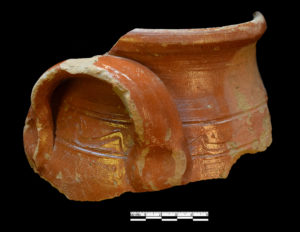
Photo 1: Locally Made Coarse Earthenware Jar Fragment with Sine Wave Decoration, Attributed to Nathan Dicks.
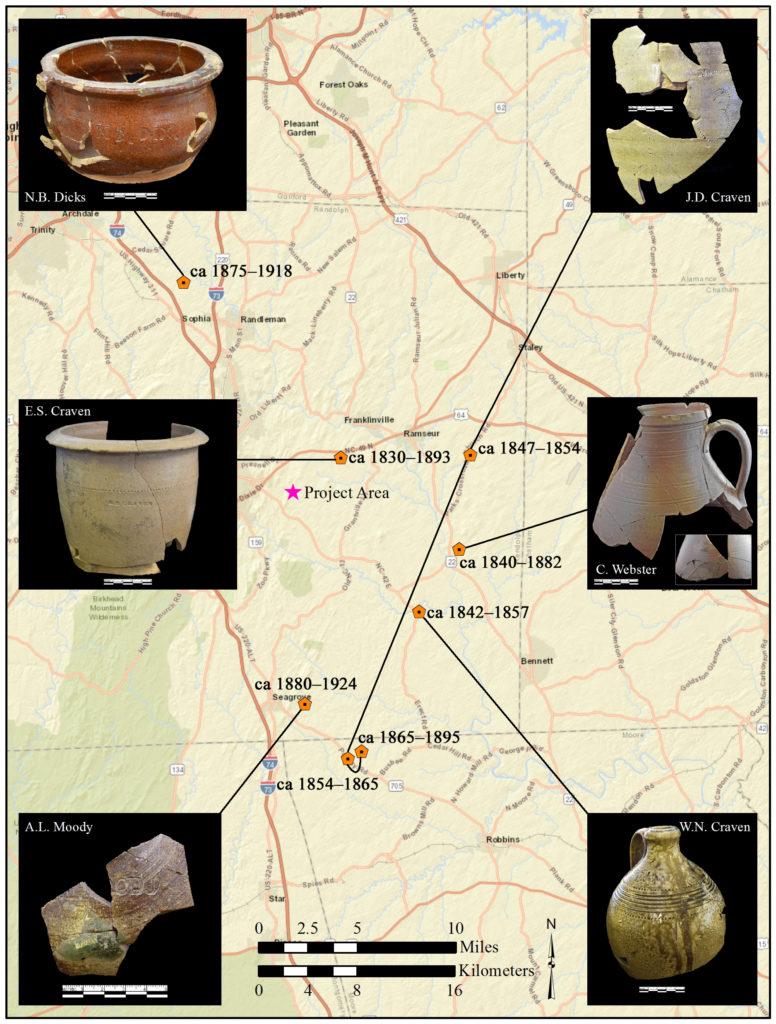
Figure: Map Showing Location of Kilns for Identified Potters in Relation to the Trogdon-Squirrel Creek Site.
Any distributions of blog content, including text or images, should reference this blog in full citation. Data contained herein is the property of Dovetail Cultural Resource Group and its affiliates.
References:
Overton, Brian
2014 Archaeological Data Recovery Plan: Site 31Rd1426, Randolph County, North Carolina. North Carolina Department of Transportation Human Environment Section, Raleigh, North Carolina.
Check out Jefferson Patterson Park’s Diagnostic Artifacts webpage for more images of stonewares recovered from the Trogdon-Squirrel Creek Site.
Discussions with local North Carolina potters, scholars, and collectors of North Carolina pottery were instrumental in the identification of the locally produced wares from the Trogdon-Squirrel Creek site. Specifically, I would like to express my gratitude to Hal Pugh and Eleanor Minnock-Pugh of New Salem Pottery, Mary Farrell of Westmoore Pottery, and Tommy Cranford.

